🇪🇺 Europe’s Military Tech Revolution: AI, Drones & Cyber 2025
In 2025, Europe is undergoing its most radical defense transformation since the Cold War. The continent is accelerating investments in AI-driven combat systems, autonomous drones, and cyberwarfare capabilities — marking a definitive shift toward strategic tech sovereignty. Fueled by rising global threats, NATO pressures, and Russia’s ongoing cyber-aggression, Europe’s defense priorities are now led by innovation, not just hardware.
As highlighted in Europe’s €150 Billion Defense Strategy and latest military procurement drives, the battlefield of tomorrow will be shaped by code, connectivity, and autonomous firepower.
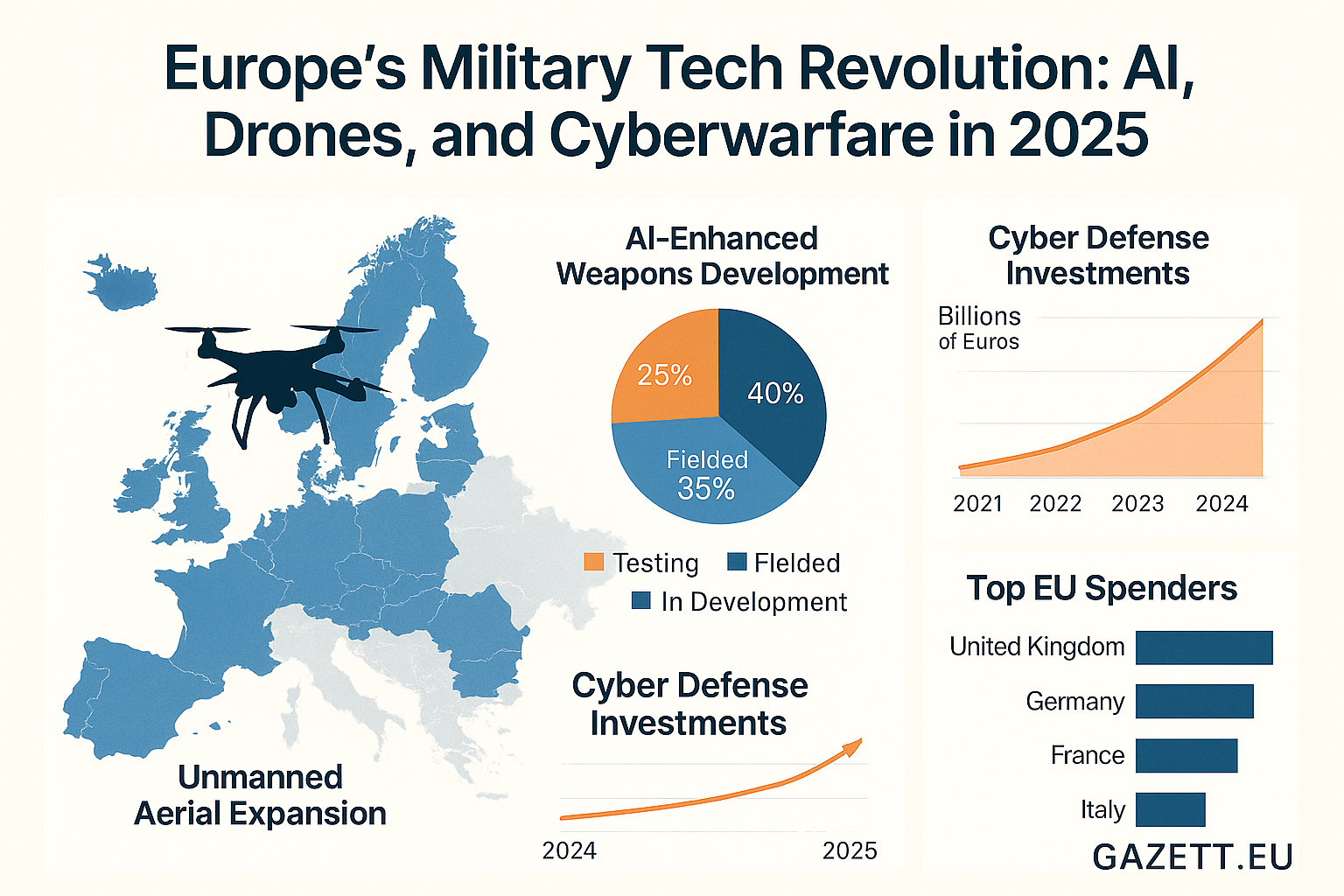
📷 Visual: Europe’s AI-Powered Defense Revolution – 2025
📚 Article Overview
🚀 Europe’s Defense Renaissance
Europe’s defense posture is undergoing a profound technological awakening in 2025. After decades of prioritizing economic diplomacy and soft power, the region is now pivoting toward high-tech deterrence strategies in response to mounting threats from the East, energy vulnerability, and an evolving global security architecture. A record €150 billion has been earmarked through new EU and national-level initiatives to develop AI-enhanced military systems, cybersecurity infrastructure, and autonomous tactical units.
The European Commission’s Strategic Compass and NATO’s 2025 Digital Interoperability Agenda are working in parallel to drive defense innovation, cross-border defense procurement, and battlefield readiness powered by emerging technologies. Countries like France, Germany, Sweden, and Estonia are at the forefront — modernizing drone fleets, investing in battlefield AI, and launching public-private defense accelerators.
- 📈 Germany: Announced €500 billion multi-year defense package including AI-based defense logistics and combat readiness programs.
- 🤝 France: Launched CyberShield 2025 — a €20 billion strategy for digital defense autonomy across the Schengen zone.
- 🚀 EU Commission: Activated new EU Defence Innovation Scheme (EUDIS) to fund battlefield tech startups and AI labs.
Related reading: Building a Stronger European Defense Union (Gazett.eu)
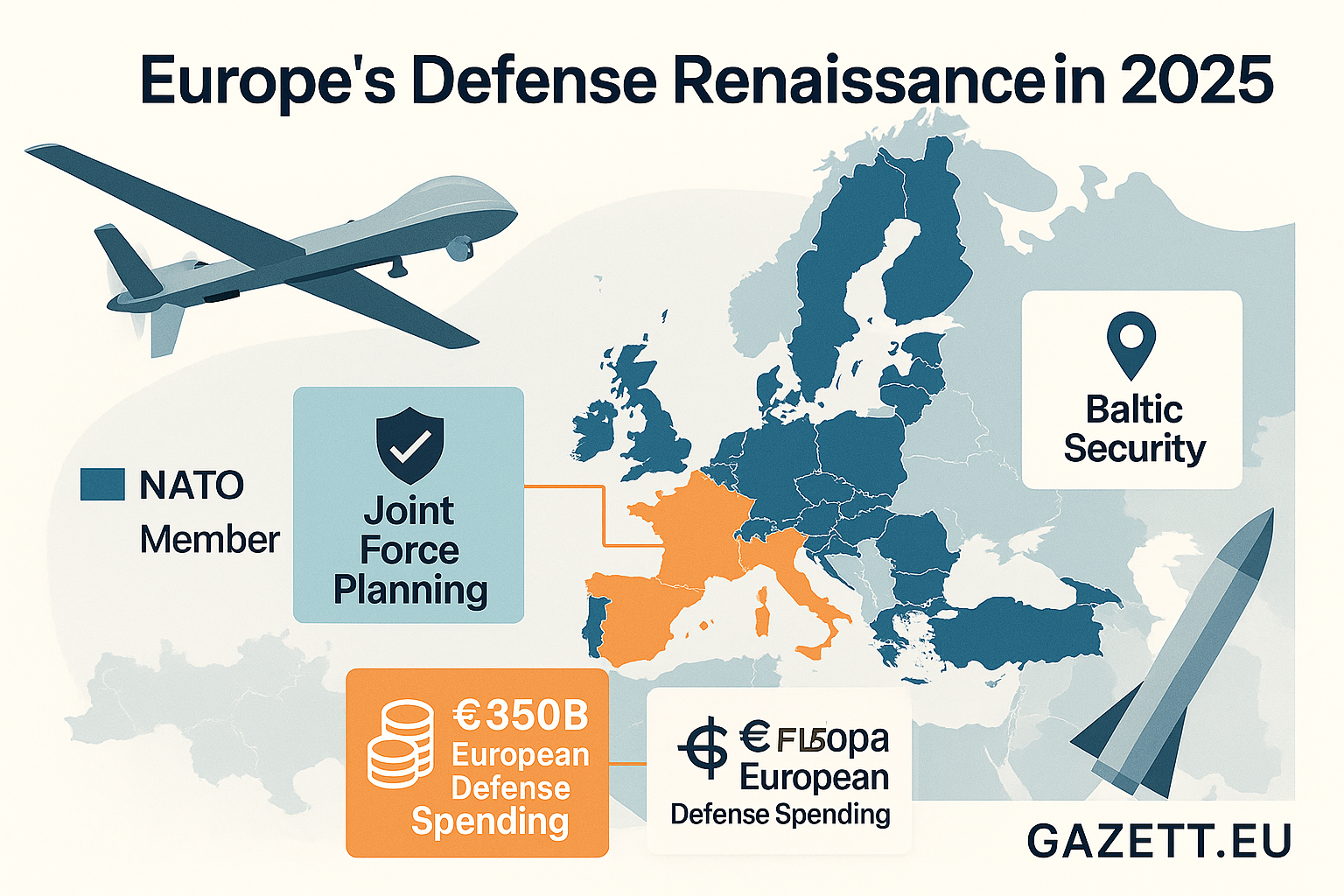
📷 Visual: Map of Europe’s High-Tech Defense Investments (2025)
🤖 AI Integration in Modern Warfare
Artificial Intelligence is no longer theoretical on the battlefield — it is now central to Europe’s next-gen military architecture. In 2025, multiple EU and NATO-aligned countries are deploying AI-powered systems for threat detection, autonomous decision-making, combat simulation, and logistics automation. These systems reduce human error, accelerate real-time battlefield calculations, and enable predictive capabilities for everything from drone movement to cyber breach prevention.
The European Defence Agency (EDA) has outlined a continent-wide strategy to embed “AI at the edge” — meaning AI deployed directly in weapons systems, satellites, and command centers — across EU combat platforms. France and Estonia are particularly aggressive in testing battlefield-AI protocols for urban combat and cyber threat mapping. Meanwhile, Germany is prototyping an AI-enhanced logistics system to coordinate troop deployment, fuel routes, and ammunition drops autonomously.
- 🧠 EDA’s EDGE AI Plan: Goal to deploy AI-enabled threat detection in 100+ EU battalions by 2026.
- 📡 France: AI-enhanced battlefield situational awareness tested with Thales and Atos in Normandy training ops.
- 🔁 Germany: AI-led supply chain model integrated into Bundeswehr’s armored divisions in Bavaria.
Related insight: Europe’s Defense Giants Reshaping Global AI Security
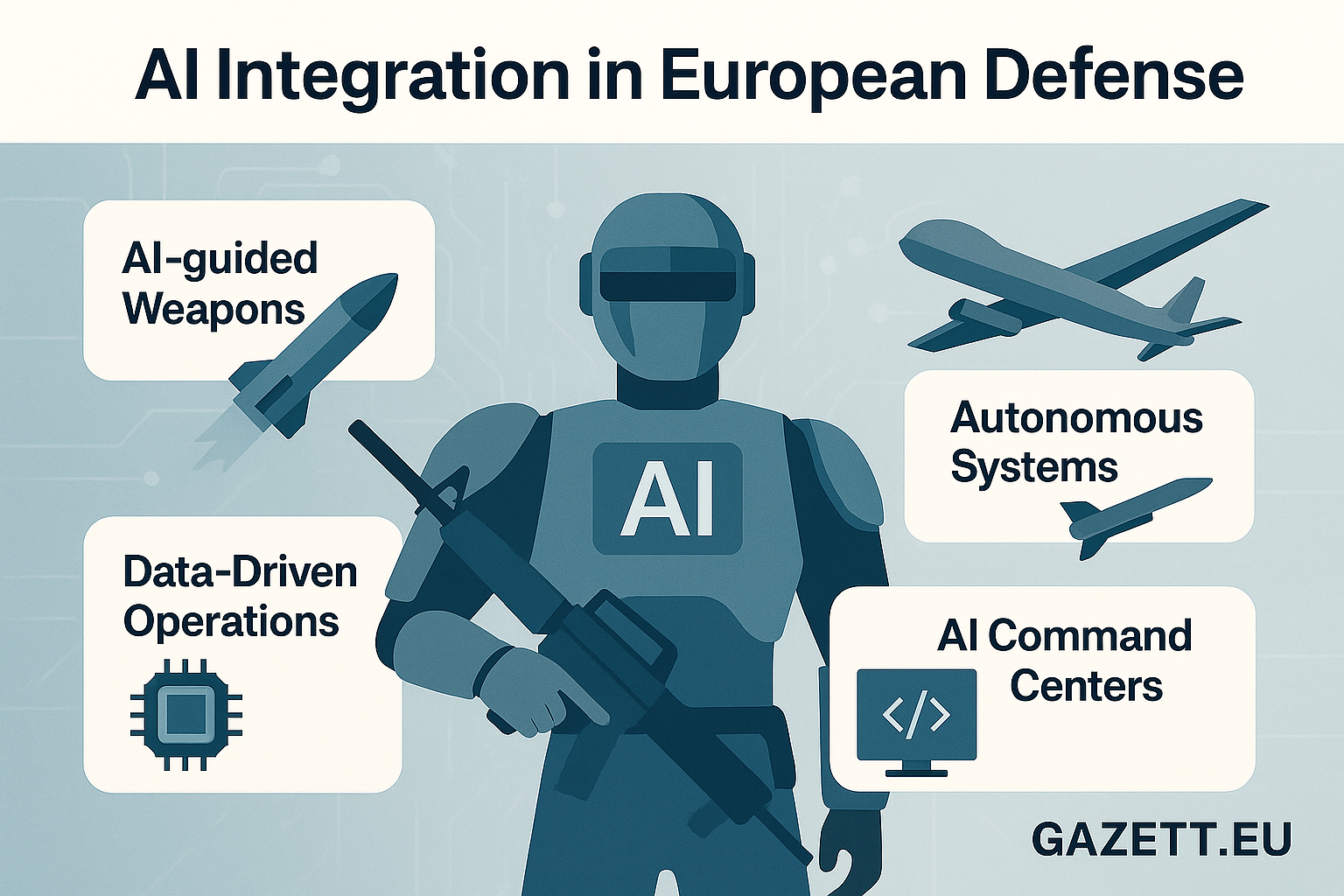
📷 Visual: Battlefield AI Systems & Real-Time Defense Computing (2025)
🛸 Evolution of Drone Capabilities
In 2025, military drone programs across Europe have shifted from surveillance support to frontline autonomous assets. Drones now carry out offensive strikes, perimeter defense, and battlefield reconnaissance — all powered by real-time data fusion and, increasingly, AI. Countries like France, Poland, and Finland are deploying tactical drones equipped with swarm coordination logic, infrared vision, and machine learning-based threat detection.
The EU’s Defense Fund is also backing startups focused on micro-drone surveillance, electronic jamming, and hybrid naval UAVs. These technologies are now being used in Baltic Sea operations, NATO exercises, and Schengen border patrols. The evolution is so rapid that traditional air dominance models are being rewritten to accommodate low-cost, high-volume, high-precision drone warfare.
- 🎯 France: Deployed autonomous loitering drones in Sahel conflict simulations with AI-piloted targeting.
- 🛰️ Poland: Integrating drone defense grids with U.S. Patriot systems along the Belarusian border.
- 🌊 Finland: Trialing Arctic UAVs for autonomous naval coordination under extreme weather AI protocols.
Also read: Gazett’s Drone Warfare 2025 Focus

📷 Visual: Evolution of Drone Roles in Europe’s Military Strategy (2025)
💻 Cyberwarfare: The New Battleground
In today’s conflict theatre, the frontline is also digital. Europe’s defense ministries, infrastructure networks, and satellite command systems are now constant targets of cyberattacks from state-sponsored and non-state actors. In response, the EU has made cybersecurity a cornerstone of its 2025 defense strategy, rolling out the European Cyber Defence Policy Framework and new centralized threat response protocols.
From quantum-hardened communications to AI-based threat detection, the region is investing in a layered approach to digital sovereignty. Estonia remains Europe’s cyber warfare hub — hosting the NATO Cooperative Cyber Defence Centre of Excellence — while France and Germany are leading large-scale encryption and cyber incident response initiatives. Even smaller states like Lithuania are contributing via offensive cyber units and deep packet AI scanners.
- 🛡️ France: CyberShield Initiative operational — automating breach containment across Schengen IT systems.
- 💥 Estonia: Launched Red Team simulations in NATO cyber drills using real-time breach environments.
- 🔐 Germany: Investing €2.5B in sovereign cryptographic tech to secure battlefield communications.
For deeper context: France’s Cyber Shield Initiative – Gazett.eu
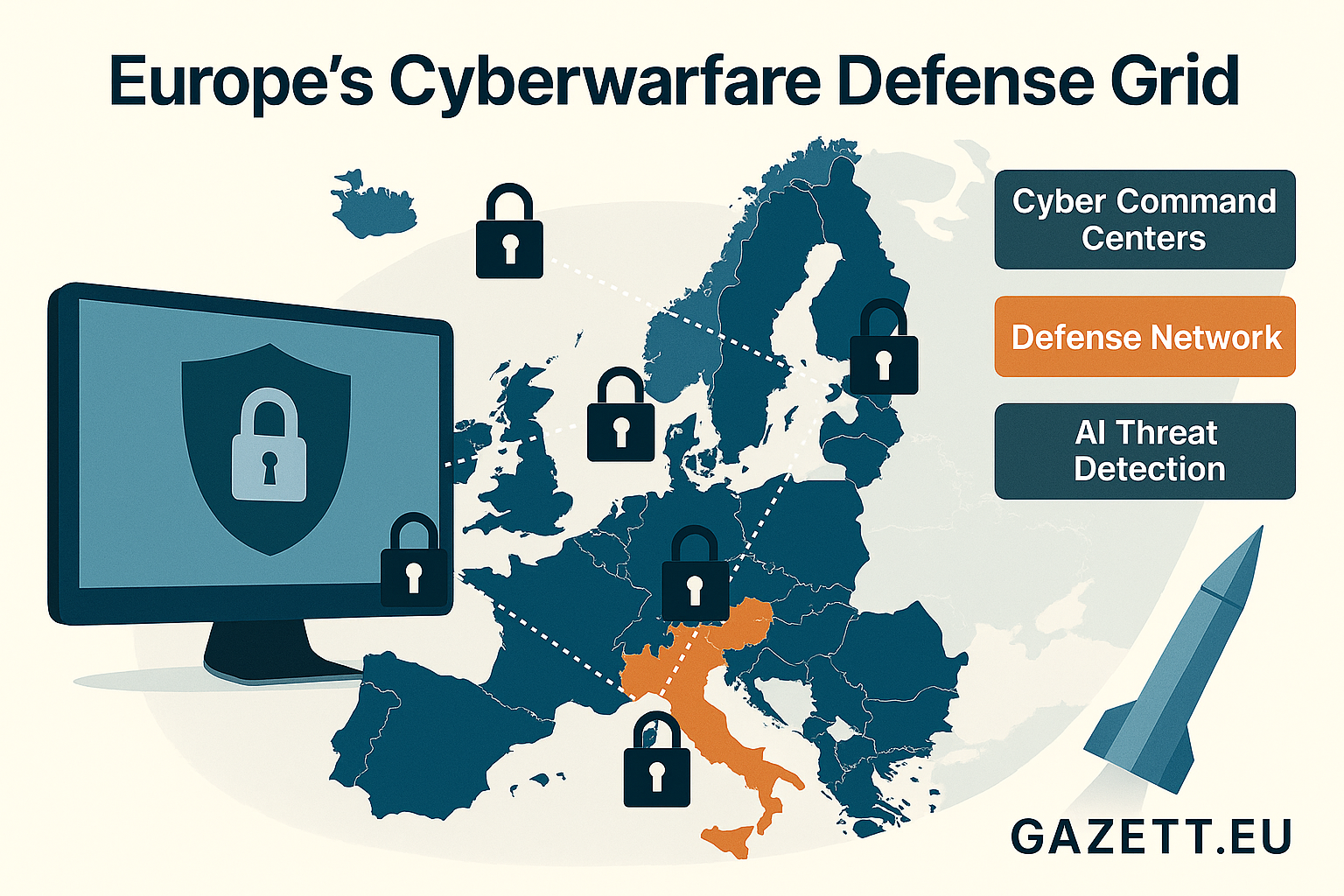
📷 Visual: Europe’s Cyber Defense Grid & AI-Enhanced Threat Zones (2025)
🧠 Talent and Innovation in Defense Tech
At the core of Europe’s military tech revolution is a growing ecosystem of engineers, scientists, cyber specialists, and defense startups. From AI labs in Paris to drone testing sites in Romania, the continent is cultivating a new generation of innovators with dual-use knowledge — able to pivot between civilian AI applications and battlefield readiness.
In 2025, the European Defence Innovation Scheme (EUDIS) has disbursed over €2.1 billion to early-stage defense tech companies. These startups work on advanced signal jamming, quantum radar, autonomous logistics, and embedded edge AI. Meanwhile, France and Germany have launched dedicated military-tech accelerators to partner students, soldiers, and engineers in prototyping real-world battlefield tools.
- 🚀 France: Station F Defense Lab now hosts 30+ AI and drone startups focused on dual-use tech.
- 📊 Germany: Bundeswehr partners with Technical University of Munich on autonomous defense robotics.
- 🌐 EU: EUDIS Innovation Tracks launched in 7 cities — including Helsinki, Madrid, and Bucharest.
More: How EU Tech Startups Are Disrupting Defense and Finance (Gazett.eu)
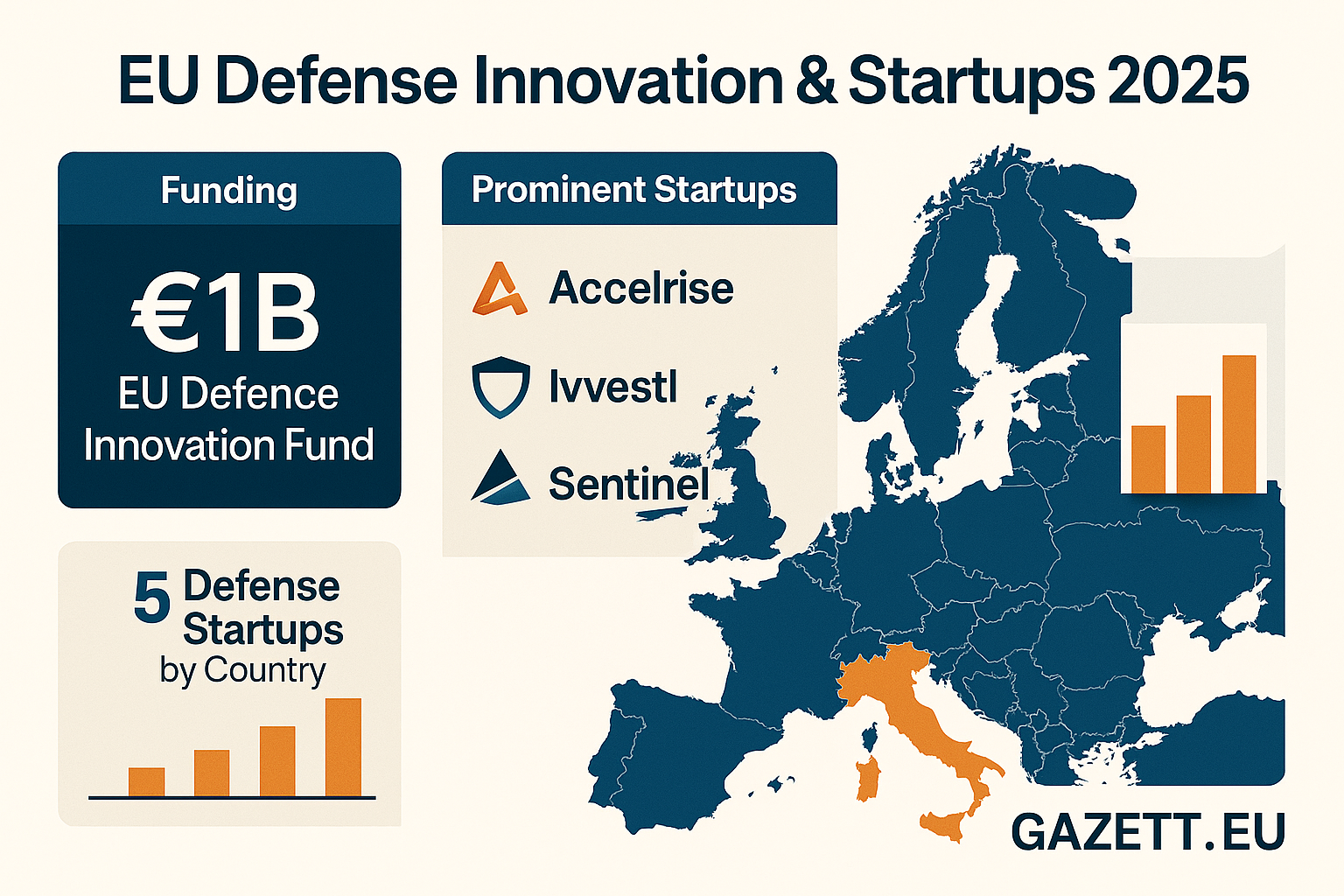
📷 Visual: Defense Tech Talent & Innovation Map Across the EU (2025)
🔗 Strategic Collaborations and Alliances
Europe’s military tech push is not happening in isolation. In 2025, collaboration across borders — both within the EU and with transatlantic partners — has become a strategic cornerstone. The European Defence Fund now actively supports joint development projects between countries to reduce duplication, enhance interoperability, and fast-track battlefield deployment.
Meanwhile, the EU-NATO Technology Compact launched this year is synchronizing efforts in AI standards, cybersecurity protocols, and drone regulation. Italy, Spain, and Greece have joined a pan-Mediterranean command-and-control satellite network, while Sweden and Denmark lead in Arctic defense integration. This alignment ensures Europe’s military tech ecosystem is both scalable and secure.
- 🌍 EU-NATO Compact 2025: Cross-aligned procurement guidelines for AI drones and battlefield sensors.
- 🛰️ Italy–Spain–Greece: Mediterranean ISR (Intelligence, Surveillance, Reconnaissance) satellite grid initiated.
- ❄️ Sweden–Denmark–Finland: Joint Arctic drone shield coordinated through NATO Rapid Response HQ.
Related read: Europe’s Defense Autonomy vs NATO: Strategic Dilemma (Gazett.eu)
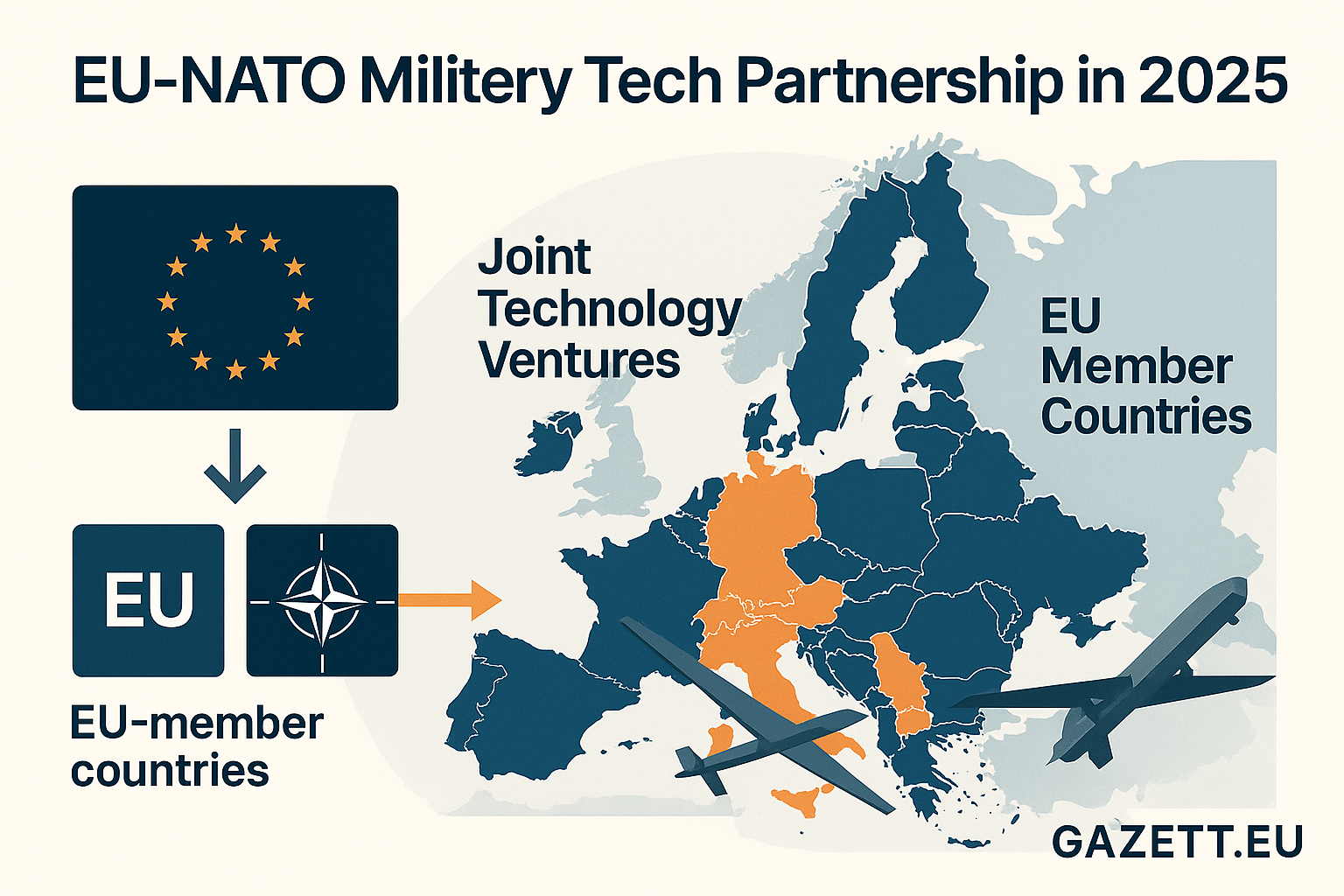
📷 Visual: Europe’s 2025 Military Tech Alliances and Collaborative Programs
📈 Future Outlook and Challenges
By 2030, Europe’s defense capabilities may be radically redefined — shifting from manpower-heavy legacy forces to algorithmically guided, tech-first command structures. While the foundations have been laid, several structural and operational challenges threaten momentum: regulatory fragmentation, ethical debates over autonomous weapons, digital dependency, and an overreliance on U.S. infrastructure in cybersecurity and satellite intelligence.
The coming years will test whether Europe can truly assert strategic autonomy — not just in doctrine but in deployment. Key areas requiring attention include common AI ethics protocols for defense use, cloud sovereignty frameworks, rapid scaling of quantum defense infrastructure, and equitable access to emerging battlefield tech for smaller member states.
- ⚠️ Fragmented Regulation: Lack of unified rules on battlefield AI use slows joint procurement and integration.
- 🧩 Ethical Debate: Questions around human-in-the-loop in AI kill-chain protocols remain politically sensitive.
- 🌐 Digital Dependency: Europe still relies on U.S. defense clouds and satellite comms for mission-critical data.
Related future scenario: EU Strategy & Security Realignment 2025
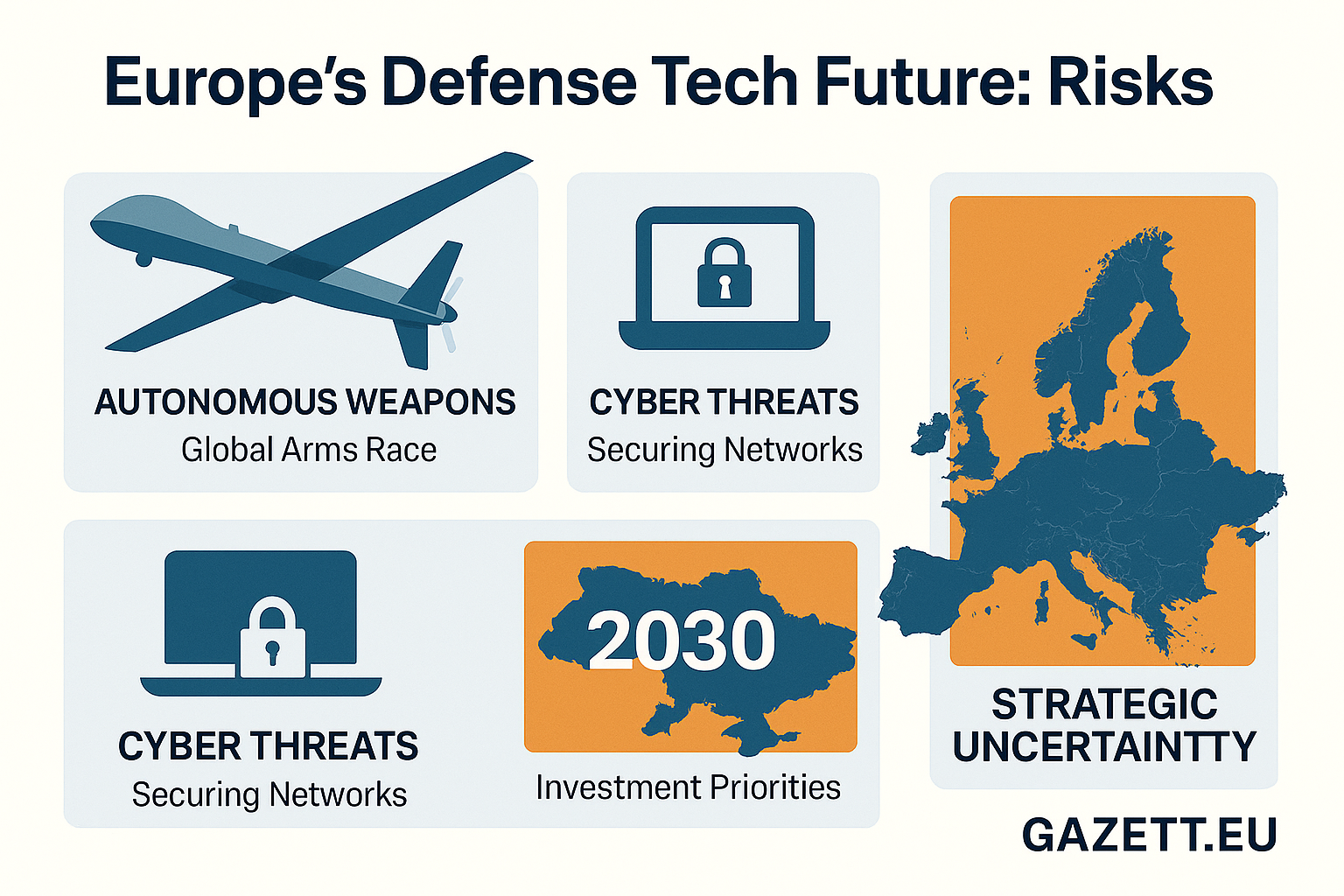
📷 Visual: Forecasting Europe’s Defense Tech Path to 2030 — Risks & Readiness
📝 Conclusion & Key Takeaways
Europe’s military tech revolution is no longer theoretical — it’s unfolding in real-time. From AI-embedded battlefield systems to drone swarms and cyber firewalls, the continent is reshaping its security posture for a new era of digital conflict. Yet, this revolution is not without its dilemmas: ethical, operational, and geopolitical. Success will depend not only on defense budgets, but on cross-border coordination, startup innovation, and the ability to outpace hybrid threats.
| Category | Insight |
|---|---|
| AI & Automation | Combat simulation, predictive logistics, autonomous targeting systems |
| Cyber Readiness | Schengen-wide firewalls, cryptographic platforms, threat simulations |
| Alliances | EU–NATO Tech Compact, joint ISR platforms, Arctic and MedGrid defense zones |
| Challenges | Ethics, interoperability, overreliance on U.S. tech stack |
Sources: EDA, NATO Cyber Doctrine, Reuters, Euractiv